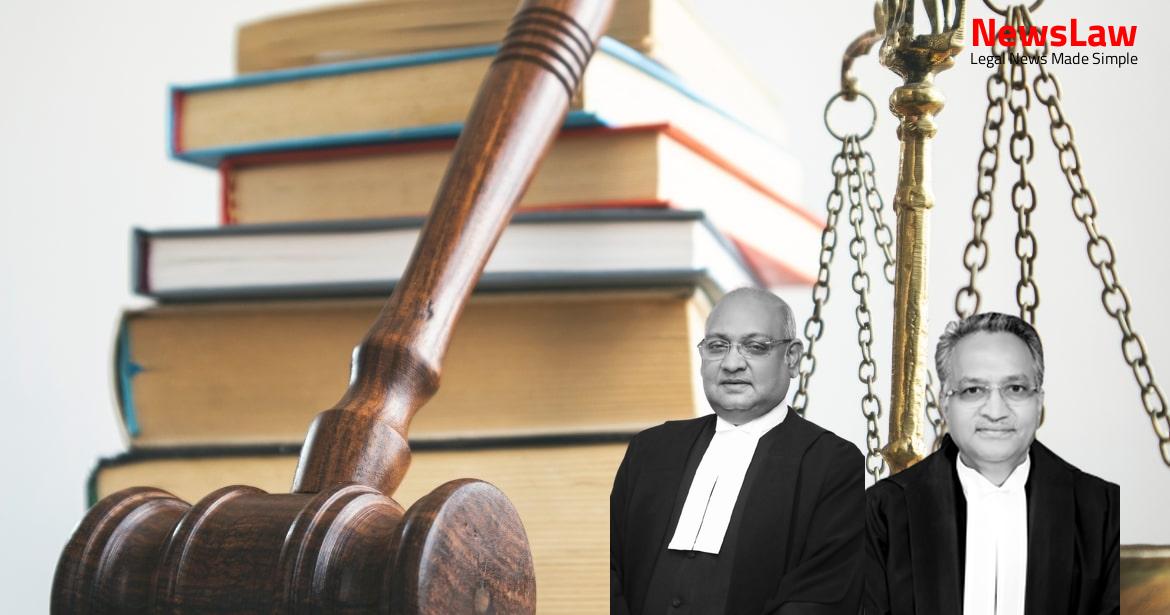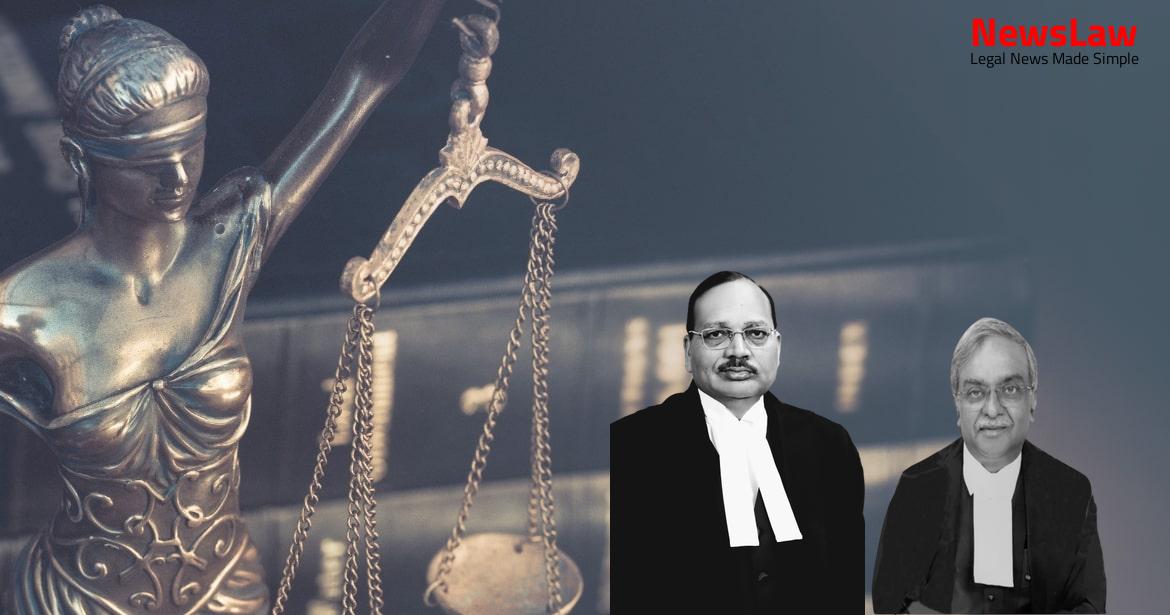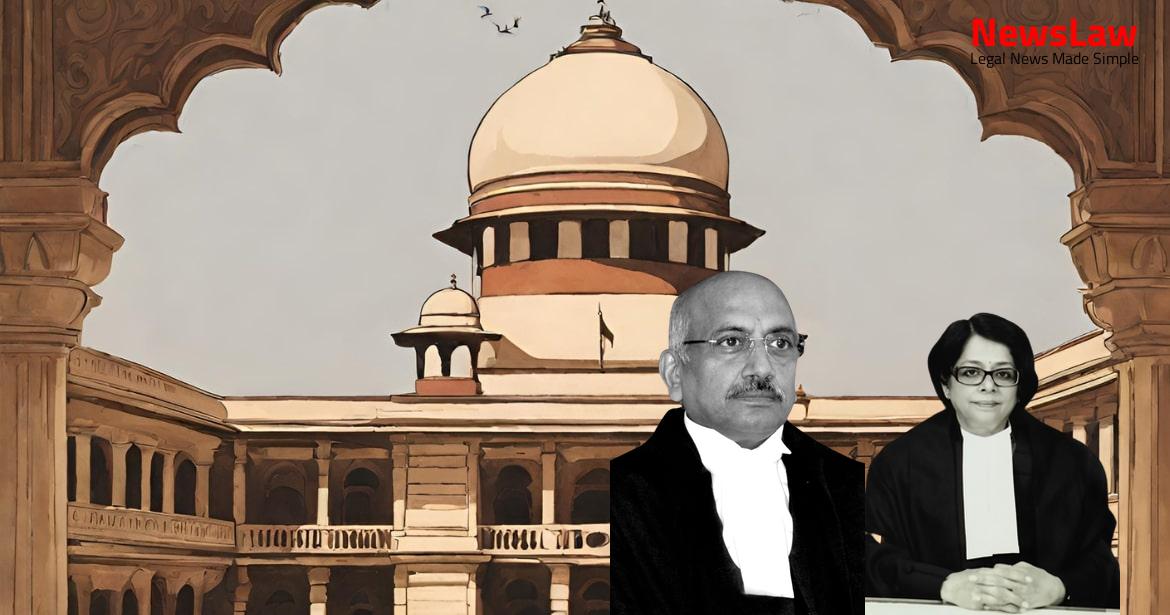Delve into the complexities of the legal world with a recent case involving a dispute between the applicant and RPC (Original Name). The Supreme Court of India has delivered a judgment shedding light on the intricacies of commercial law and arbitration agreements. Discover the implications of this decision and its impact on future legal proceedings. #CommercialLaw #LegalCase
Analysis
- The applicant asserts that the respondents made representations about their ability to print labels for the applicant, including booklet and leaflet labels required for Mucinex exported to the USA.
- The applicant has relied on emails exchanged during negotiations to argue that Mr. Frederik Reynders was acting on behalf of the parent company of respondent No.1, thus binding respondent No.2 to the arbitration agreement.
- Counter assertions from respondent No.2 deny any association with Mr. Frederik Reynders and refute the claims of being party to the negotiation or execution of the agreement.
- Respondent No.1 expresses willingness to resolve disputes through arbitration with the applicant, excluding respondent No.2 from the proceedings.
- The court is to consider the intention of the parties to bind both signatory and non-signatory parties to the arbitration agreement, based on the correspondence and circumstances surrounding the agreement.
- The burden of proof to establish respondent No.2’s involvement or consent to the arbitration agreement lies with the applicant, which has not been adequately met.
- The applicant’s arguments for impleading respondent No.2 in the arbitration proceedings are challenged on grounds of lack of association and authority with the negotiations and agreement execution.
- An arbitration agreement entered into by a company within a group of corporate entities can bind its non-signatory affiliates.
- The doctrine of ‘group of companies’ recognizes that modern business transactions involve multiple layers and agreements.
- The doctrine aims to fulfill a mutually held intent between signatory and non-signatory entities within the same group.
- It is intended to find the true essence of the business arrangement and bind non-signatories who have assumed the obligation to be bound.
- The doctrine seeks to unravel layered structures of commercial arrangements to establish the intent to bind non-signatories.
- Mr. Frederik Reynders was neither connected to nor had any authority of Respondent No.2, only an employee of Respondent No.1.
- Disputes have arisen between the applicant and Respondent No.1, leading to the application for arbitration.
- Arbitration clause (clause 13) in the subject agreement between the applicant and Respondent No.1.
- Respondent No.1 agrees to the appointment of a sole arbitrator by the Court for conducting arbitration proceedings as domestic commercial arbitration.
- The application fails against Respondent No.2, as it is not connected to the arbitration agreement.
- As per the conclusion, no relief can be granted to the applicant regarding international commercial arbitration.
- Stand reiterated in written submissions filed on behalf of Respondent No.1 after oral arguments.
Also Read: Balancing Justice: Case Summary of C.P. No. 16/2017
Decision
- Application dismissed against RPC (Original Name).
- All pending interim applications disposed of.
- No costs to be paid.
- Mr. Justice Badar Durrez Ahmed appointed as the sole arbitrator for domestic commercial arbitration at New Delhi between the applicant and RPC (Original Name) as per the terms of the Act of 1996.
Also Read: Redefining Pre-Deposit Requirements: Ideal Detonators Pvt. Ltd. v. Commercial Tax Officer
Case Title: RECKITT BENCKISER (INDIA) PRIVATE LIMITED Vs. REYNDERS LABEL PRINTING INDIA PRIVATE LIMITED
Case Number: ARBIT.CASE(C) No.-000065-000065 / 2016



